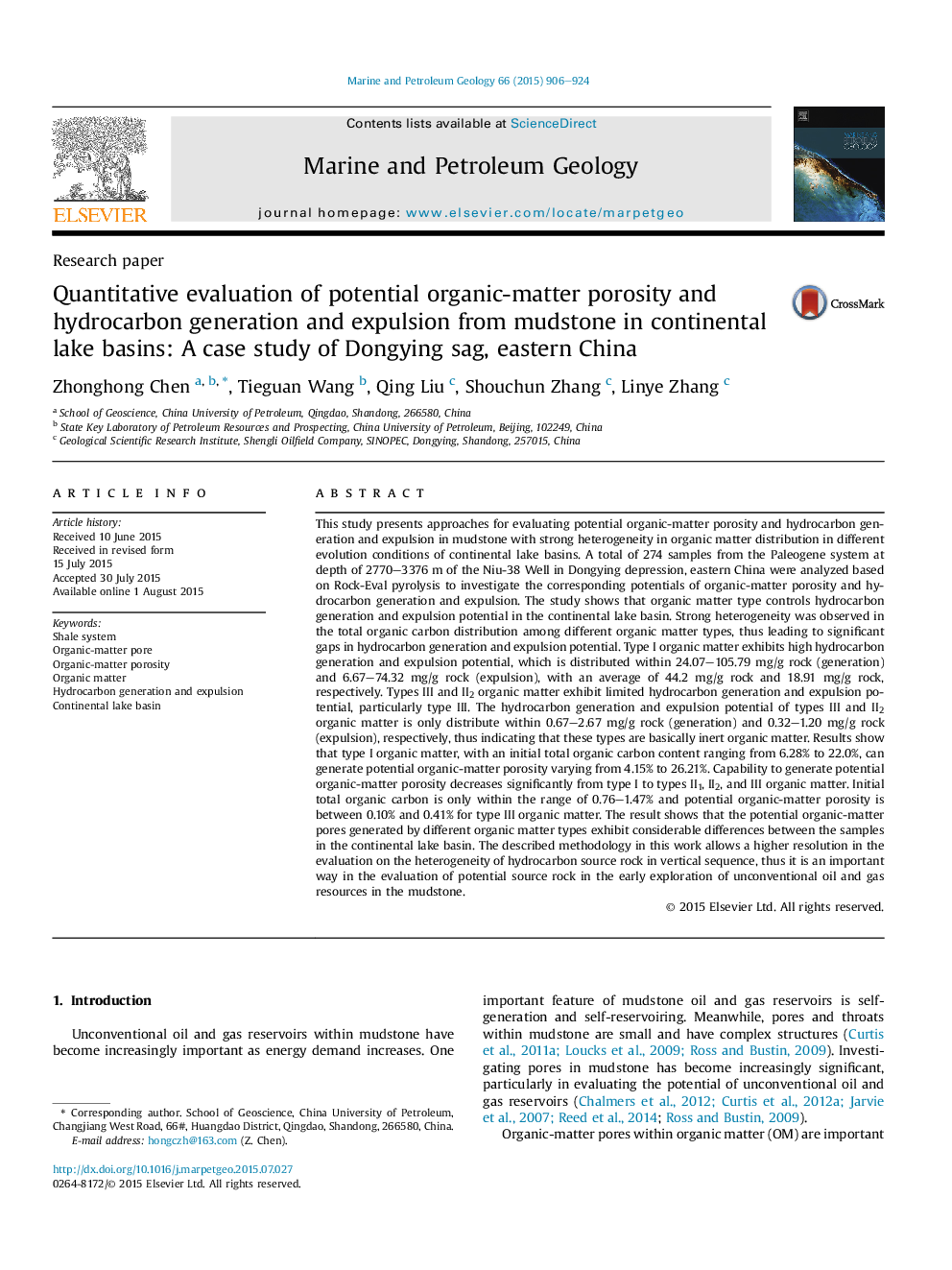| کد مقاله | کد نشریه | سال انتشار | مقاله انگلیسی | نسخه تمام متن |
|---|---|---|---|---|
| 4695498 | 1351610 | 2015 | 19 صفحه PDF | دانلود رایگان |

• A calculation method was developed to evaluate potential organic porosity.
• Terrestrial source rock potential of three sections in one well was evaluated.
• Geochemical heterogeneity of mudstone and shale was revealed.
• Potential organic porosity ranges from 0.10 to 26.21% within VRO of 0.5–1.0%.
• Organic matter type and abundance dominantly control organic porosity potential.
This study presents approaches for evaluating potential organic-matter porosity and hydrocarbon generation and expulsion in mudstone with strong heterogeneity in organic matter distribution in different evolution conditions of continental lake basins. A total of 274 samples from the Paleogene system at depth of 2770–3376 m of the Niu-38 Well in Dongying depression, eastern China were analyzed based on Rock-Eval pyrolysis to investigate the corresponding potentials of organic-matter porosity and hydrocarbon generation and expulsion. The study shows that organic matter type controls hydrocarbon generation and expulsion potential in the continental lake basin. Strong heterogeneity was observed in the total organic carbon distribution among different organic matter types, thus leading to significant gaps in hydrocarbon generation and expulsion potential. Type I organic matter exhibits high hydrocarbon generation and expulsion potential, which is distributed within 24.07–105.79 mg/g rock (generation) and 6.67–74.32 mg/g rock (expulsion), with an average of 44.2 mg/g rock and 18.91 mg/g rock, respectively. Types III and II2 organic matter exhibit limited hydrocarbon generation and expulsion potential, particularly type III. The hydrocarbon generation and expulsion potential of types III and II2 organic matter is only distribute within 0.67–2.67 mg/g rock (generation) and 0.32–1.20 mg/g rock (expulsion), respectively, thus indicating that these types are basically inert organic matter. Results show that type I organic matter, with an initial total organic carbon content ranging from 6.28% to 22.0%, can generate potential organic-matter porosity varying from 4.15% to 26.21%. Capability to generate potential organic-matter porosity decreases significantly from type I to types II1, II2, and III organic matter. Initial total organic carbon is only within the range of 0.76–1.47% and potential organic-matter porosity is between 0.10% and 0.41% for type III organic matter. The result shows that the potential organic-matter pores generated by different organic matter types exhibit considerable differences between the samples in the continental lake basin. The described methodology in this work allows a higher resolution in the evaluation on the heterogeneity of hydrocarbon source rock in vertical sequence, thus it is an important way in the evaluation of potential source rock in the early exploration of unconventional oil and gas resources in the mudstone.
Journal: Marine and Petroleum Geology - Volume 66, Part 4, September 2015, Pages 906–924